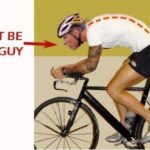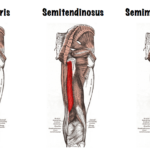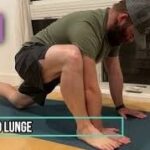Weight-lifter’s shoulder, or Distal Clavicular Osteolysis, is a painful shoulder injury that occurs when the distal end of the Clavicle beings to deteriorate. As the body attempts to heal itself, the surrounding area can become inflamed and fibrosis (scar tissue) can form. Untreated, the condition can cause degeneration of the AC joint.
After reviewing the basic anatomy of the shoulder, going over possible causes for this injury and the symptoms that can be found, the treatment recommendations will be reviewed, including how massage, self-massage and stretching can be included in the recovery process.
Shoulder anatomy

The shoulder is composed of 3 bones:
- The Clavicle (or Collarbone) goes from the Sternum (or Breastbone) to the shoulder
- The Scapula (or Shoulder blade) includes the Acromion (most lateral part, can be felt when touching the outermost and superior part of the shoulder), the Glenoid cavity (articulates with the Humerus) and the Coracoid process (under the Clavicle)
- The Humerus, or upper arm bone
Several joints are involved in a healthy shoulder:
- The Glenohumeral joint, between the Glenoid cavity and the Head of the Humerus
- The Acromioclavicular joint (or AC joint), between the Acromion and the distal end of the Clavicle
- The Scapulothoracic joint, where the Scapula glides on top of the Thorax, in the back
- The Sternoclavicular joint, between the Breastbone and the Collarbone.
For Distal Clavicular Osteolysis, the areas affected are usually the distal part of the Clavicle and the AC joint, but other surrounding structures can be affected by the inflammation too.
Cause
The deterioration is generally due to repetitive stress on the shoulder. Stress can come from over training or improper training involving excessive pull on the Clavicle. For example, doing bench presses where the elbow drops below the body can put excessive strain on the Clavicle.
Symptoms
Weightlifter’s shoulder causes sharp pain in the area of the AC joint. The pain increases during movements that involve the joint (bench press, push-ups, power clean, …), the evening after training, or when sleeping on that shoulder.

Treatment
Non-surgical options:
- Rest from the activities that affect the bone and/or modification of weight training techniques gives more time to the bone to heal, and could help it regenerate itself. Modification recommendations by a physical therapist can include:
- Narrowing hand spacing on barbells
- Ending bench presses 2 inches above the chest
- Icing helps decrease inflammation and provides pain relief.
- Taking anti-inflammatories (as advised by a doctor) can help for pain management.
- Massage therapy can help reduce hypertonic muscles that might be adding strain to the shoulder structures and can help reduce pain from muscle guarding.
If non-surgical options are not successful, surgery options may be offered.
Massage therapy for symptom relief
During a massage therapy session, the focus will be on the muscles attaching to the anatomical structures presented above. By reducing areas of hypertonicity, the stress on the bony structures is reduced as well and discomfort from tight muscles is decreased. Tight areas can be found in the Pectorals, the neck muscles or in the upper back and can be treated with techniques such as deep tissue and stretching. These areas can also be addressed at home with self-massage techniques involving a massage ball and stretching: some commonly used techniques are illustrated below.
The techniques presented can be used outside the context of injury to prevent excessive tightness and maintain shoulder range of motion. Include them in your training regimen as needed.
As always, make sure to see your doctor if you suspect you have a shoulder injury and before attempting any self-care exercises.
Related article:
What Exactly Is a Rotator Cuff? article + video
Sources
- A Patient’s Guide to Weightlifter’s Shoulder (Distal Clavicular Osteolysis), Houston Methodist (http://www.houstonmethodist.org/orthopedics/where-does-it-hurt/shoulder/weightlifters-shoulder/)
- Sports and Exercise Massage, 2nd Edition, by Sandy Fritz
- Anatomie de l’appareil locomoteur, member supérieur, Michel Dufour
- Anatomy Trains, Thomas W. Myers
- The Roll Model, Jill Miller
Images
- Shoulder anatomy:
http://www.eorthopod.com/images/ContentImages/shoulder/shoulder_cuff_tear_arthropathy/shoulder_cuff_tear_arthropathy_anat03.jpg - image of weightlifter:
http://us.myprotein.com/thezone/wp-content/uploads//2016/08/shoulder-pain-after-bench-press-1.jpg
This article/video is for educational purposes only; do not attempt without your physician’s clearance. If you are in pain or injured, see your physician.
Copyright © Vidal Sports LLC 2018







